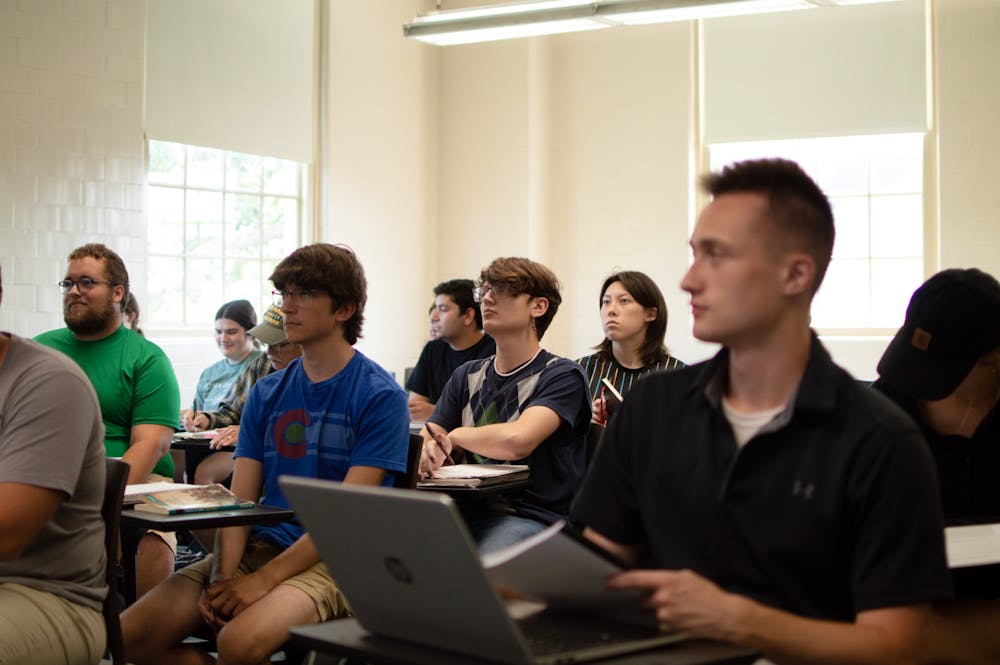The new semester brings busy dining halls, crowded sidewalks and large groups of traveling students. This year, however, the groups may linger longer than usual.
Struggling to find a table at Maple Dining Hall or squeezing in the back of a lecture hall could be a long-term issue. Bethany Perkins, assistant vice president and director of admission, said that at the start of the term, Miami University reached 98% capacity for on-campus living students. This has caused complications that concern campus comfort and practicality.
Miami consistently admits more than 80% of incoming students who apply, with this year’s acceptance rate being 80.7%. The Admitted Student profile states that for fall of 2024, Miami admitted 29,787 first-year students.
Perkins said it is wonderful for Miami to have the enrollment rates it does when many other schools are not meeting their goals.
“It’s not something that we should take for granted each year,” Perkins said. “It takes a lot of hard work, and it takes students, staff and faculty to make the prospective students and families feel welcome at Miami. I’m really grateful for how the entire university community understands the importance of showing people how wonderful Oxford is and treating people well.”
Despite the increase in the number of students on campus, Perkins said Miami’s acceptance rate is lower than it has been, having decreased since fall of 2019.
Perkins said colleges and universities have been facing difficulties with declining high school graduation rates and international student enrollment. However, Miami’s enrollment has remained high.
Jill Mignery, a geology professor at Miami, said she hasn’t noticed a huge difference in enrollment, as her 100-level geology class is almost always at capacity. The course is part of the Miami Plan, which contributes to the demand.
However, Mignery said she has heard many students discussing the difficulties of attending an almost-full Miami. Some of the students had tried taking 100-level courses in the first semester of their first year, but couldn’t until their sophomore or junior year due to high demand.
Though she doesn’t have experience with these issues personally, Mignery said she thinks it has the potential to become a problem.
“I definitely think it can be problematic when looking at less frequently offered classes,” Mignery said, “a class that maybe is offered every other semester or once a year, and if it’s related to a specific major especially, that might cause some issues when you have a high student demand for those courses.”
Mignery said that in her experience, students pay better attention in the smaller classes. Because of this, a potential increase in class could cause larger attendance issues.
Enjoy what you're reading?
Signup for our newsletter
Miami Plan classes are not the only courses witnessing increased class density. Molly Love, a sophomore diplomacy and global politics major, said one of her classes is more packed than she expected.
“My disability studies class (DSC 375) probably has close to every seat filled,” Love said.
Love’s program typically does not witness high numbers of declared students. With concentrated classes experiencing higher student enrollment, the reactions can sway from positive to negative.
Love expressed her content for the increased interest in first years at Miami, but remained cautiously optimistic in her response.
“I feel like it could be a problem soon,” Love said,“but I’m glad that it's not a problem currently.”




